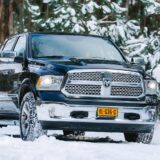
EMA sues California over failure to provide adequate lead time to OEMs
The Truck and Engine Manufacturers Association (EMA), based in Chicago, Illinois, U.S.A., has filed a lawsuit seeking to ensure that the California Air Resources Board (CARB) follows the explicit requirements established by U.S. Congress in the federal Clean Air Act that heavy-duty on-highway engine and vehicle manufacturers be provided at least four full model years of lead time before new emission standards become effective.
On December 22, 2021, CARB adopted the Heavy-Duty Engine and Vehicle Omnibus Regulation, which updates standards, testing and compliance mechanisms for nitrogen oxide (NOx) and particulate matter (PM) emissions from on-road heavy-duty vehicles for model years (MY) 2024 through 2031, applicable to new heavy-duty on-highway engines and vehicles sold in California. This new regulation will reduce per-vehicle heavy-duty NOx emission limits by 90% by 2031, leading to an estimated 30% reduction in overall heavy-duty NOx emissions by 2050.
The Omnibus regulation updates NOx and PM emission limits for heavy-duty vehicles starting in MY 2024 and updates them again for MY 2027 and 2031. In conjunction with these updates, in-use on-road testing protocols and evaluation are significantly revised to better simulate real-world conditions. Other emissions updates include revisions of useful life provisions and idling limits and updated emissions limits for PM. The regulation also refines in-use vehicle testing to more accurately capture the full range of conditions in which heavy-duty vehicles operate, including cold-starts, and it will require manufacturers to submit test plans for approval prior to testing. Finally, the new regulations resolve new discrepancies between California and EPA emission standards, through the creation of a California-only averaging, banking, and trading program starting with MY 2022.
The Omnibus Regulation requires heavy-duty engine and vehicle manufacturers to comply with the new standards on January 1, 2024, providing manufacturers only two years of lead time. In recognition of California’s unique air quality issues, the federal Clean Air Act allows California to establish its own unique standards and not be subject to the Act’s preemption provisions, provided California meets certain requirements – including providing heavy-duty on-highway engine and vehicle manufacturers four full model years of lead time.
“Truck and engine manufacturers are proud that today’s modern engines reduce harmful emissions to near zero levels, and we are committed to building still cleaner products – but CARB must provide manufacturers the minimum four years of lead time mandated by Congress. We acknowledge that the Clean Air Act gives CARB the authority to establish California specific emissions standards and regulations; however, in doing so, CARB must follow Congress’s requirements. This lawsuit is simply to ensure that CARB follows all of the prescribed rules – one of which is intended to maximize the likelihood of the smooth and successful implementation of new emission standards,” EMA President Jed R. Mandel said.
“We urge the U.S. District Court for the Central District of California to reaffirm the minimum four-year lead time requirement. We hope this matter will be resolved quickly so that manufacturers have the lead time and regulatory certainty needed to develop and build the products our customers – and our economy – depend on.”
When enacting the Clean Air Act, the U.S. Congress recognized that heavy-duty on-highway engine and vehicle manufacturers needed time to develop and produce products to meet stringent new emissions standards. The highly diversified and low-volume commercial engine and vehicle manufacturing industry must design multiple new engine and exhaust aftertreatment technologies, conduct extensive testing to ensure long-term durability, integrate the new systems into extensive distinct vehicle chassis, and assure customers that the new products will meet their needs through real-world demonstrations. The U.S. Congress set four full model years as the minimum amount of time manufacturers needed to complete the product design and development process In 1986, the U.S. Court of Appeals for the District of Columbia Circuit reaffirmed Congress’ intent.
To read the lawsuit filing, click here.








